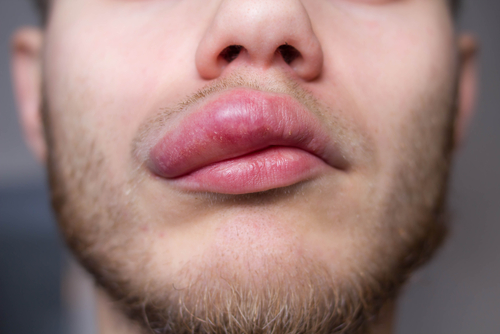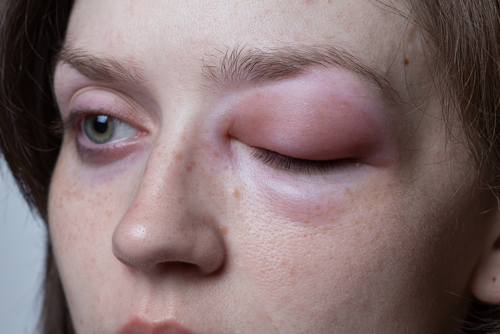Angioedema is a mysterious and complex condition that continues to challenge medical professionals today. Those who experience this condition suffer from rapid and severe swelling under the skin, which can be physically and emotionally debilitating. With its roots deeply embedded in the intricate workings of our immune system, angioedema has become a subject of intense research and fascination within the medical community.
Differentiating Angioedema from Other Swelling Conditions
Differentiating angioedema from other swelling conditions can be challenging due to the similarities in symptoms and clinical presentations. However, specific vital characteristics can help distinguish angioedema from other swelling disorders.

- Angioedema typically involves rapid and pronounced swelling beneath the skin’s surface, specifically in the lips, eyelids, hands, feet, and genitals. This swelling is often asymmetrical and may be accompanied by itching or a burning sensation. Unlike other types of nodes, angioedema commonly affects deep layers of tissue rather than just the superficial layers.
- Angioedema is frequently associated with the sudden onset of other symptoms, such as hives, itching, and difficulty breathing. This combination of symptoms suggests an underlying allergic or immune response, a hallmark of angioedema. Other swelling conditions, such as lymphedema or oedema related to heart failure, do not typically present with these accompanying symptoms.
- Angioedema episodes often resolve within 24-48 hours, although they can occasionally last longer. If swelling persists for an extended period or occurs chronically, it may indicate an alternative condition rather than angioedema.
Differentiating angioedema from other swelling conditions requires careful evaluation of the specific characteristics and accompanying symptoms. Considering the rapid onset, deep tissue involvement, accompanying symptoms, and duration of episodes, healthcare professionals can accurately identify angioedema and provide appropriate management.
Symptoms and Causes: Getting to Know Angioedema

Symptoms of angioedema can vary depending on the individual and the severity of the condition. The most common symptom is sudden, noticeable swelling beneath the skin’s surface. This swelling typically affects the face, lips, tongue, throat, hands, and feet. The swelling can be quite severe and may cause discomfort or pain. In some cases, angioedema can also be accompanied by symptoms such as redness, warmth, itching, or a rash.
Sometimes, it may be caused by an allergic reaction to certain medications, foods, or environmental triggers. Other times, it may be linked to an inherited condition or an immune system dysfunction. Angioedema can also be a side effect of an underlying medical condition such as a thyroid disorder or autoimmune disease. Understanding the specific cause of angioedema is crucial in determining the most effective treatment plan and managing the condition.
Angioedema is a challenging medical condition requiring further research and understanding. Its symptoms can be distressing for those who experience them, impacting their physical and emotional well-being. By uncovering its underlying causes and potential triggers, medical professionals can enhance their knowledge of angioedema and develop more targeted treatments to relieve patients.
Managing and Treating Angioedema
Managing and treating angioedema requires a multifaceted approach tailored to the individual’s circumstances. The primary goal is to alleviate symptoms and prevent future episodes. Treatment options can range from lifestyle changes to medications depending on the severity and frequency of attacks.
One key aspect of managing angioedema is identifying and avoiding triggers. A detailed diary of symptoms and potential triggers can help identify patterns and guide treatment choices. In some cases, allergen testing may be recommended to identify specific triggers.
Antihistamines are commonly prescribed to block the release of histamine, a chemical that plays a crucial role in allergic reactions. Corticosteroids and epinephrine may reduce inflammation and swelling in more severe cases. Specific medications targeting the underlying genetic defect may be prescribed for individuals with hereditary angioedema (HAE).
Lifestyle changes can also be crucial in managing angioedema, maintaining a healthy diet, managing stress levels, and practising good hygiene to prevent infections. For individuals at high risk of severe attacks or with HAE, carrying an emergency kit with appropriate medications and educating close contacts on the necessary steps to take during an attack are essential.
In conclusion, managing and treating angioedema requires a comprehensive approach that addresses potential triggers, utilises medications, and incorporates lifestyle modifications. With timely and appropriate management, individuals with angioedema can find relief from symptoms and minimise the impact of this perplexing disorder on their daily lives.



